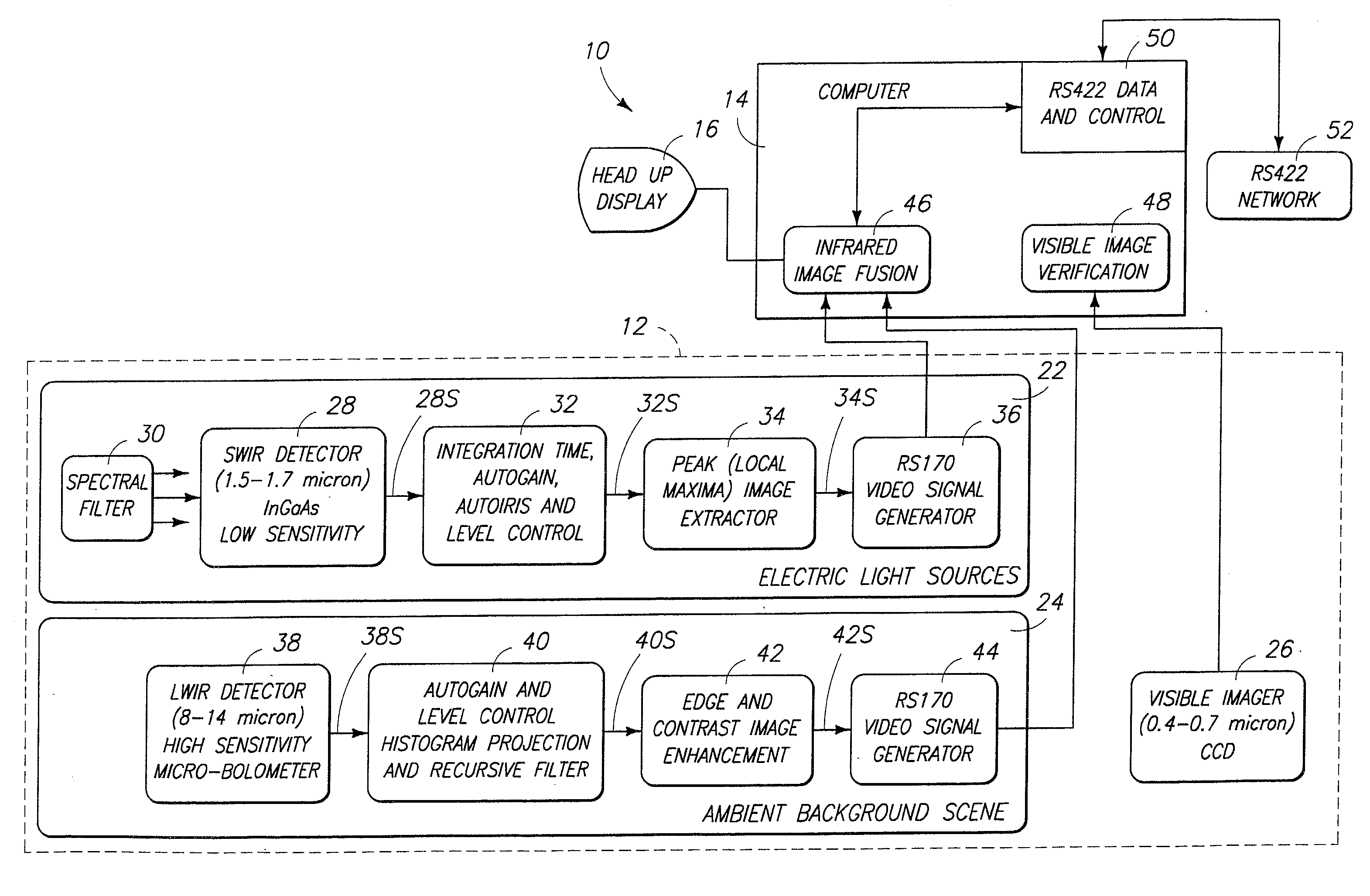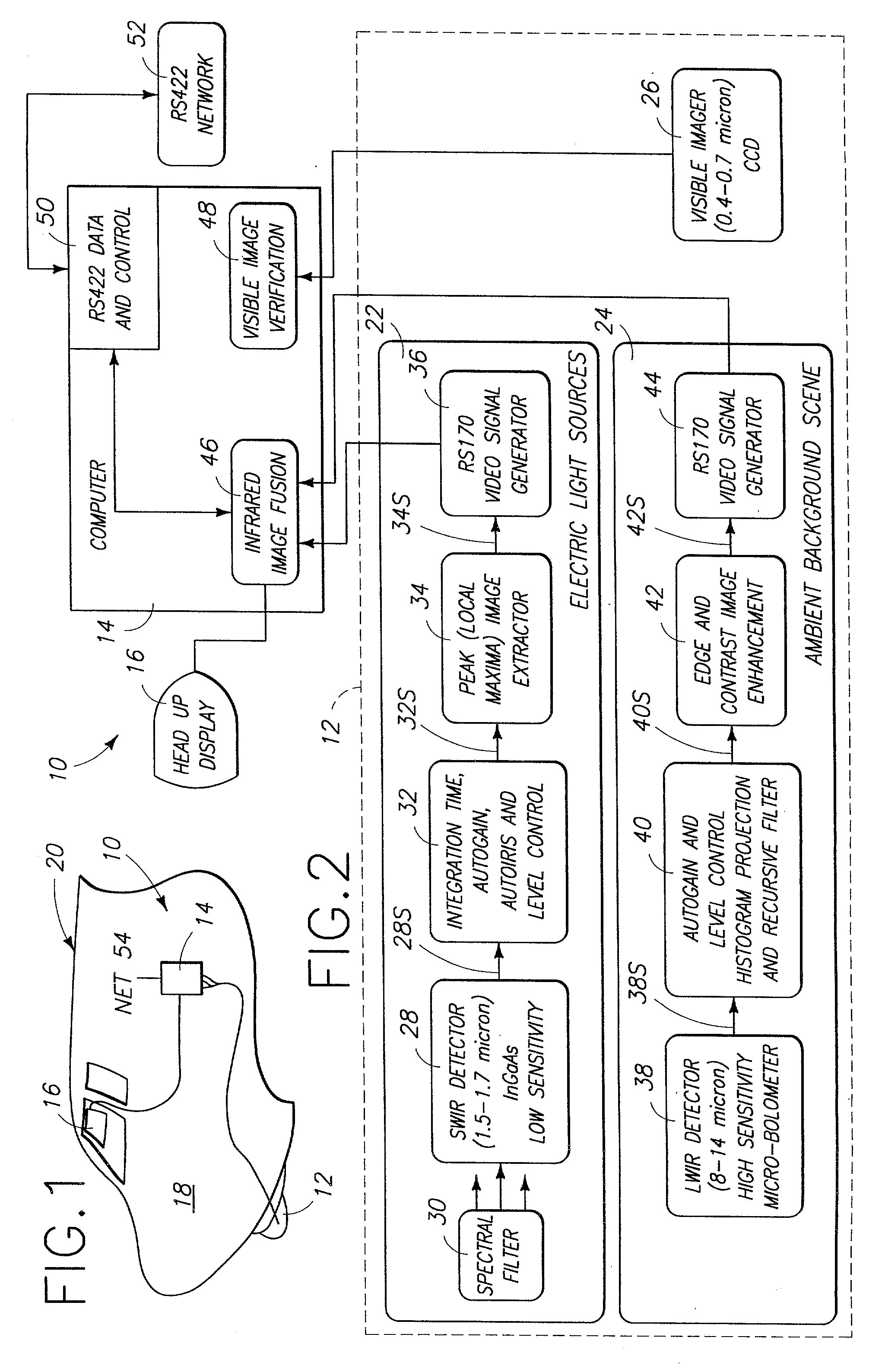Enhanced vision system sensitive to infrared radiation
a vision system and enhanced technology, applied in the field of enhanced vision systems sensitive to infrared radiation, can solve the problems of severe limitation of visibility, navigation lights that do not show up well in images generated by lwir imagers, and errors in navigating aircraft that can have extremely dire consequences, and achieve excellent transmissivity, less transmissivity, and minimize pilot distraction
- Summary
- Abstract
- Description
- Claims
- Application Information
AI Technical Summary
Benefits of technology
Problems solved by technology
Method used
Image
Examples
Embodiment Construction
[0023] Referring to FIG. 1, an enhanced vision system (EVS) 10 is shown, including a multi-detector head 12, a computer 14, and a display 16, all of which generally are mounted in a forward section 18 of an aircraft 20. As shown in FIG. 2, multi-detector head 12 preferably includes an electric light source imager 22 for sensing infrared radiation from electric light sources, an ambient background scene imager 24 for sensing infrared radiation from a background scene, and a visible light imager 26 for sensing visible light to verify whether a human pilot should be able to view the background scene without the need for enhanced vision. Electric light source imager 22 and ambient background scene imager 24 both produce an RS170 video signal that is monitored by computer 14, and used to produce an image on head-up display 16. Visible light imager 26 is monitored by computer 14 separately from the video signals produced by video imagers 22 and 24, and is used to select whether to display...
PUM
 Login to View More
Login to View More Abstract
Description
Claims
Application Information
 Login to View More
Login to View More - R&D
- Intellectual Property
- Life Sciences
- Materials
- Tech Scout
- Unparalleled Data Quality
- Higher Quality Content
- 60% Fewer Hallucinations
Browse by: Latest US Patents, China's latest patents, Technical Efficacy Thesaurus, Application Domain, Technology Topic, Popular Technical Reports.
© 2025 PatSnap. All rights reserved.Legal|Privacy policy|Modern Slavery Act Transparency Statement|Sitemap|About US| Contact US: help@patsnap.com



